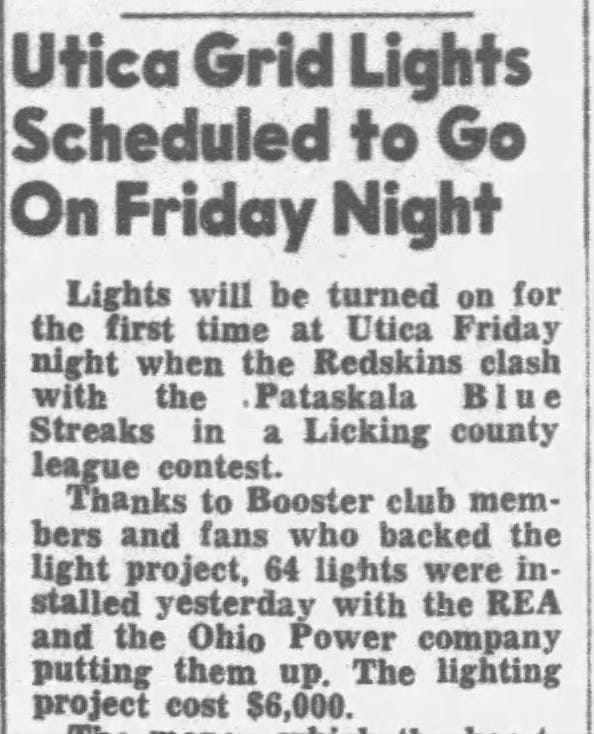Today's Tidbit... Before Friday Night Lights
There was a time in this country when everyone knew their place and respected the traditions that made it great. High schools played football on Friday nights, colleges played on Saturday, and the pros owned Sunday. All was right with the world.
Unfortunately, our vision of the past is something of a myth, at least concerning the early days. For much of football's history, the Friday night lights tradition did not exist because lighting bright enough to light a football field did not exist other than for the occasional novelty game. As discussed in Shedding Light on Football's Early Night Games, stadium lighting was relatively poor into the 1930s, even at stadiums used by the colleges and pros. Most high schools played on Friday or Saturday afternoons until Friday night high school football became popular in the 1950s.

If any group can argue for pioneering Friday night football, it was urban and small colleges. A page from a 1933 publication shows that some urban Catholic universities played a share of their home games on Friday nights. (Other pages list 70 or so college games played in daylight on Saturdays.) Like the urban schools, small colleges played on Friday nights to avoid competing with the Saturday games played by local high schools and major colleges games on the radio.

By the late 1930s, however, an increasing number of high schools installed lights and played at night. Still, the Friday night lights tradition among high schools did not become the norm until after WWII, when lighting technology improved and costs dropped. Some schools, such as Utica High in Ohio, installed lights in 1947 after having the installation costs paid for by loans taken out by their booster club, to be paid off over the next few years. The early 1950s also saw the onset of top college games being televised on Saturday afternoon, giving further impetus for high schools to play on Friday.
The Sports Broadcasting Act of 1961 solidified the Friday night lights tradition. The Act exempted professional sports leagues from certain aspects of antitrust legislation, allowing them to negotiate league-wide television contracts rather than each team negotiating their own. As part of that deal, the Act prohibited the NFL and AFL from broadcasting games on Fridays and Saturdays between the second Friday in September and the second Saturday in December. The pros scheduled some non-Sunday games under certain exemptions, but the act never applied to the colleges, so they could schedule games whenever they wanted. Still, most colleges avoided Friday games to keep their players from missing classes and to avoid antagonizing area high schools. High schools, of course, were free to schedule games on Fridays or Saturdays.
College conferences have encroached on Friday nights recently, especially for early-season games. Still, they spread those games around to attract television audiences without saddling certain schools with multiple Friday games.
A reminder… The recording of the March 2024 Dig is available to paid subscribers at the link below.
Football Archaeology is reader-supported. Click here to buy one of my books or otherwise support the site.




When noon eastern games started becoming popular (gulp) three plus decades ago I recall being on a Big East message board where there were many unhappy that the conference was encroaching on high school football.
Did not know until then that Saturday morning high school football was a thing in some places
Very accurate and well-researched! Question: is it true that the 5.5 day workweek (which was a largely in place before WWII) was a contributing factor to college games being played on Saturday afternoons rather than earlier times on Saturday? My Dad told me that when I was a kid…